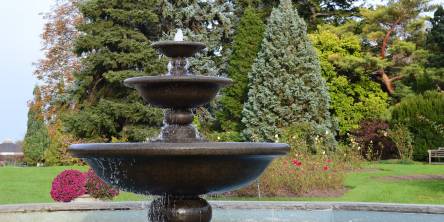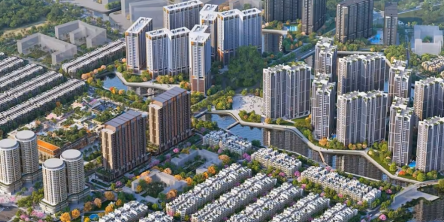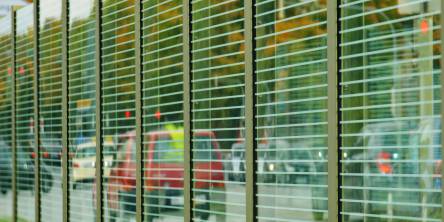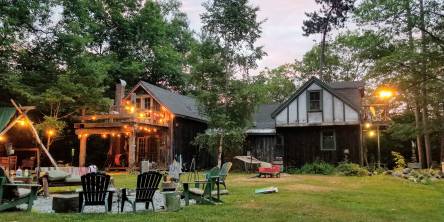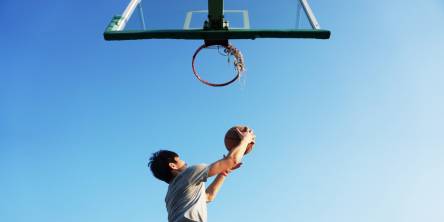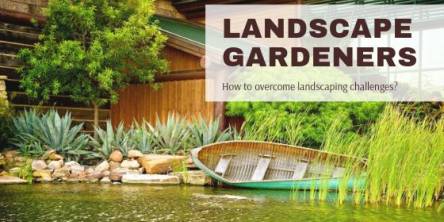The History of Commercial Artificial Grass

Nowadays, commercial artificial grass is far from an uncommon sight in back gardens and sports pitches the world over. The synthetic material seems to well and truly have gained space over its natural counterpart, with traits such as its durability and ease of maintenance endearing it to the general public.
Time was, however, when the situation was markedly difference. Outside of a sporting context, commercial artificial grass was regarded as tacky and an inferior substitute for the real thing, and even when used to cover playing surfaces for sports it was far from consensual.
In the midst of all the disapproval, however, turf always had a few admirers, and it is them who are largely responsible for its eventual expansion and success. This article harks back to a time before commercial artificial grass existed, to give an overview of its origin, evolution and eventual rise to popularity worldwide.
1960s: Origins
The origins of commercial artificial grass date back to 1960s America. The material was first researched and devised by a team of scientists from the North Carolina State University College of Textiles, under the supervision of the dean himself, David Chaney. Together, these men came up with a material which looked and felt somewhat similar to grass, but without any of the shortcomings this material possesses; in short, what is nowadays known as turf.
Having created and perfected this material for optimal performance, Chaney and his team began searching for parties potentially interested in a test run. It did not take them long at all to find a considerably prominent ‘guinea-pig’, in the form of baseball team the Houston Astros, based out of the city of the same name in Texas. In 1966, the Astros’ home field, the Astrodome, became the first sports pitch in the world to be covered in commercial artificial grass. It was the beginning of a story which would only go uphill from there.
1970s: Expansion
Once commercial artificial grass had proven its mettle as the playing surface for the Astros, and become known as ‘Astroturf’ as a result, other sports team owners across North American began taking an interest in the material. The late 1960s and early 1970s would see synthetic turf carpets spread across both major and minor league baseball fields, and eventually make their way into American football stadiums as well. Franklin Field, home to the Philadelphia Eagles and the University of Pennsylvania varsity football team, was the first venue to feature commercial artificial grass, but other pitches would soon follow suit, further cementing awareness for the material in public consciousness.
1990s: Landscaping
As popular as it was becoming with sports fans, however, commercial artificial grass still had one hurdle left to jump: the residential and landscaping market. Among home-owners, turf continued to be considered a cheap-looking, shoddy material, not at all an alternative to a real grass lawn. This generalised opinion stemmed from the first few artificial turf carpets looking somewhat less than realistic, as well as from the material’s connotation with lower-income homes. As such, commercial artificial grass faced a challenge when trying to prove its worth in the home market.
This challenge would eventually be overcome, but not for another two decades. It was not until the 1990s, more than twenty-five years after it had first been invented, that commercial artificial grass finally gained traction as a valid alternative within the home and garden market. This was largely due to the vastly improved appearance and realism level of modern turf carpets in relation to their predecessors, which helped do away with many of the concerns and prejudices keeping commercial artificial grass from establishing itself a landscaping alternative.
For the following two decades, commercial artificial grass saw its popularity continue to rise, until it could stand side by side with natural grass. Nowadays, many people even consider the material superior to its natural counterpart, at least for certain purposes, and it is expectable that this trend will continue in years to come. It is interesting, however, to think of a time when commercial artificial grass was not as popular as it is today, and to learn exactly how it came to achieve its present standing in society.
Similar Articles
Discover why quality landscaping supplies are essential for a stunning yard. Learn how the right tools, soil, and materials can transform your garden.
An excellent landscape design will maximize your outdoor space to a working and beautiful space t
In recent years, there has been a movement among architects to create more sustainable and livable cities. This has led to a new approach to global city planning that focuses on creating spaces that are pedestrian-friendly, environmentally friendly, and that encourage social interaction.
Fencing has always been a popular idea for building construction. It offers security to the enclosed premise and beauty to the overall structure. Be it the house, the farm, or an orchard; fencing is considered to be an integral part of the construction.
Taking care of your property is a normal aspect of maintaining your home. Of course, plenty of people fall short when it comes to properly taking care of their lawns. While it is likely that you spend more time inside your home than hanging around the yard, this is the part of your property that visitors and passersby are going to notice first.
Pine trees, found commonly in the Northern Hemisphere belong to the genus Pinus in the family Pinaceae. In favorable conditions, they can grow from anywhere between a few feet to a few hundred feet tall. They have a long lifespan that ranges from anywhere between one hundred years to thousands of years old.
Are you a family of sporty types? Do your kids play soccer, basketball, baseball—or all of the above? Delight your family and turn your backyard into a sports oasis.
Everybody loves to have a well-maintained landscape garden. No one can resist the relaxing and comforting effect of its beauty, right? Thanks to the creativity and great works of professional landscape gardeners.
Even though it's what's on the inside that matters the most, the outside is not to be neglected. It's true for people and it's true for a house you live in. When people decide to redecorate their home, the majority will choose to invest money in transforming the interior of the house.

